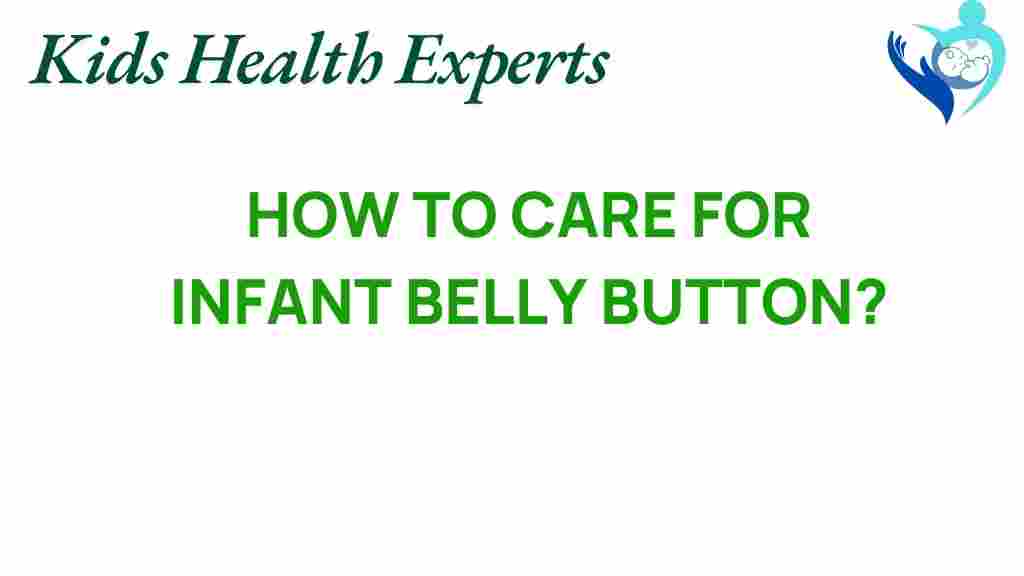Essential Tips for Caring for Your Infant’s Belly Button
As a first-time parent, caring for your newborn can be both exciting and overwhelming. One of the essential aspects of infant care is managing the care of your baby’s belly button, which is where the umbilical cord was attached. Proper hygiene and care of the belly button are crucial for ensuring your baby’s health and preventing infections. In this guide, we’ll provide you with essential tips for maintaining your infant’s umbilical cord area, ensuring optimal newborn health.
Understanding the Umbilical Cord and Belly Button
The umbilical cord is a vital lifeline that nourishes your baby in the womb, providing oxygen and nutrients. After birth, the cord is cut, leaving a small stump attached to your baby’s belly button. This stump will eventually dry up, fall off, and heal, but proper care is necessary during this period.
Step-by-Step Guide to Caring for Your Infant’s Belly Button
Here’s a comprehensive step-by-step process to follow for effective baby care:
1. Maintain Cleanliness
- Always wash your hands before touching your baby’s belly button.
- Use a damp cloth or sterile cotton swab to clean around the umbilical cord stump gently.
- Make sure to clean any discharge or crust that may accumulate.
2. Keep it Dry
Keeping the area dry is crucial for preventing infections. Here’s how:
- Expose the belly button stump to air as much as possible. This promotes drying.
- Avoid covering the stump with tight diapers. Fold the diaper below the stump to prevent moisture buildup.
3. Avoid Bathing in Water
For the first few weeks, avoid submerging your baby in water:
- Instead of traditional baths, opt for sponge baths until the stump falls off.
- Keep the belly button area dry during sponge baths.
4. Watch for Signs of Infection
Monitoring your infant’s belly button is essential. Look for:
- Redness or swelling around the stump
- Foul odor or excessive discharge
- Signs of discomfort or crying when the area is touched
If you notice any of these signs, consult your pediatrician promptly.
Common Issues and Troubleshooting Tips
As you navigate parenting tips for your newborn, you may encounter some common issues related to belly button care:
1. Bleeding from the Belly Button
A small amount of blood can be normal when the stump falls off. However, if the bleeding is excessive:
- Apply gentle pressure with a clean cloth to stop the bleeding.
- Contact your healthcare provider if the bleeding does not stop within a few minutes.
2. Stump Not Falling Off
If the umbilical stump hasn’t fallen off within two weeks:
- Continue to keep the area clean and dry.
- Monitor for any signs of infection.
- Consult your pediatrician if there are concerns about the stump remaining.
3. Skin Irritation Around the Belly Button
Sometimes, skin irritation can occur:
- Ensure that the area is kept clean and dry.
- Consider using a mild, unscented moisturizer if needed, but consult your doctor first.
When to Seek Medical Attention
While most umbilical cord stumps heal without complications, it’s important to know when to seek help. Contact your healthcare provider if you notice:
- Persistent bleeding
- Signs of infection (redness, swelling, discharge)
- Fever in your baby
Conclusion
Caring for your infant’s belly button may seem a small part of baby care, but it is a vital component of ensuring your newborn’s health and safety. By following these essential tips on hygiene and care, first-time parents can feel more confident in managing this aspect of infant care. Remember that every baby is unique, and if you have any concerns, your pediatrician is always there to help.
For more tips on parenting and infant care, check out our comprehensive guide on newborn health. And for further reading on baby safety and care, visit this external resource.
This article is in the category Care and created by KidsHealthExperts Team
